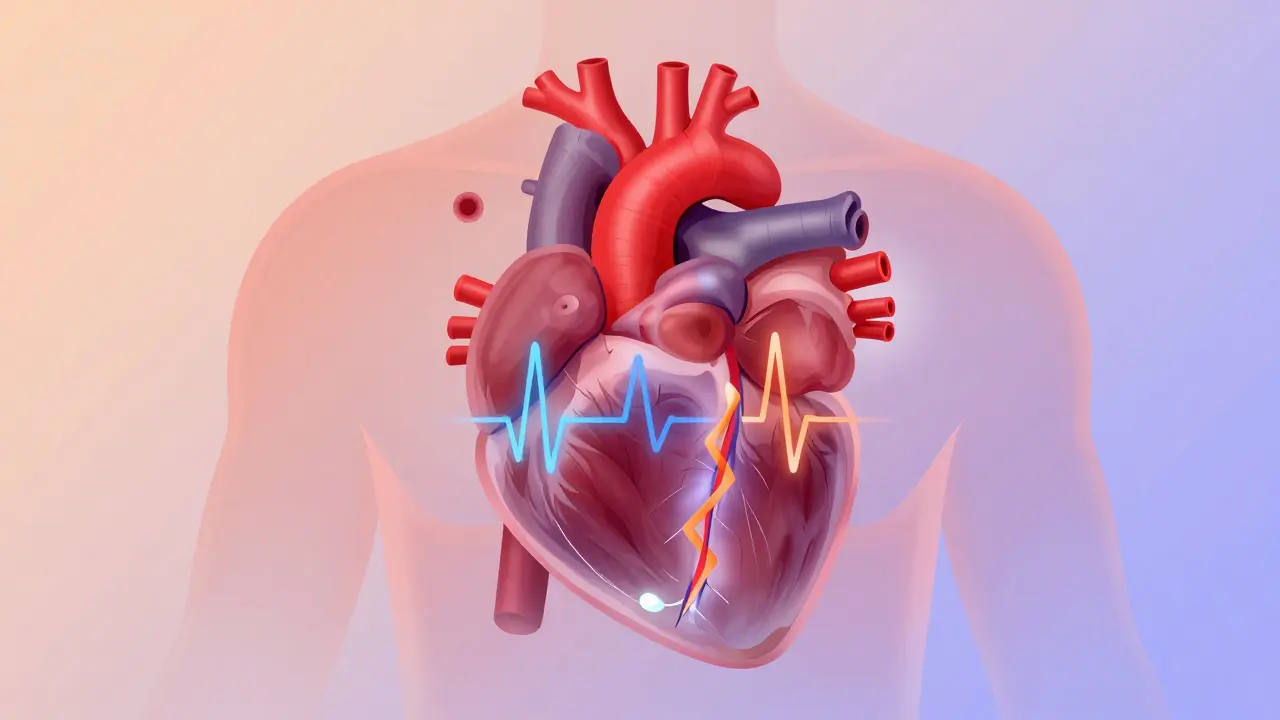Understanding Subarachnoid Hemorrhage
Before diving into exercise and physical activity guidelines for individuals who have experienced a subarachnoid hemorrhage (SAH), it's important to first understand what this condition is and how it affects the body. A subarachnoid hemorrhage is a type of stroke that occurs when a blood vessel in the brain ruptures and bleeds into the space surrounding the brain, called the subarachnoid space. This bleeding can result in increased pressure on the brain and can cause serious complications, such as brain damage, coma, or even death.
Recovery from a subarachnoid hemorrhage can be a long and challenging process, as it often involves physical, cognitive, and emotional challenges. One of the key components of recovery is participating in exercise and physical activity, which can help improve physical strength, cognitive function, and overall well-being. In this article, I will share some practical advice and guidelines for incorporating exercise and physical activity into your daily routine after experiencing a subarachnoid hemorrhage.
Consulting Your Medical Team
Before beginning any exercise or physical activity regimen, it's crucial to consult with your medical team, including your neurologist, physical therapist, and occupational therapist. They will be able to provide you with personalized guidance and recommendations based on your specific condition, medical history, and recovery progress. Remember, every individual's recovery journey is unique, so it's important to follow the advice of your healthcare professionals to ensure that your exercise program is safe and effective.
Additionally, your medical team can help you set realistic goals and expectations for your exercise program. This can help you stay motivated and focused on your recovery, as well as prevent you from pushing yourself too hard and causing further harm.
Starting Slow and Gradual
When beginning an exercise program after a subarachnoid hemorrhage, it's essential to start slow and gradually increase the intensity and duration of your workouts. This can help prevent injury and allow your body to adjust to the new demands being placed on it. Begin with low-impact exercises, such as walking or gentle stretching, and slowly progress to more challenging activities as your strength and endurance improve.
It's also important to listen to your body and be aware of any signs that you may be pushing yourself too hard. Pay attention to any pain, dizziness, or fatigue, and be prepared to adjust your workouts accordingly. Remember, slow and steady progress is the key to a successful recovery.
Incorporating Aerobic Exercise
Aerobic exercise, also known as cardiovascular exercise, is an important component of a well-rounded exercise program for individuals recovering from a subarachnoid hemorrhage. This type of exercise can help improve heart and lung function, increase endurance, and promote overall health and well-being. Some examples of low-impact aerobic exercises that may be appropriate for individuals recovering from a SAH include walking, cycling, swimming, and water aerobics.
As with any exercise, it's important to start slow and gradually increase the intensity and duration of your aerobic workouts. Be sure to consult with your medical team for personalized guidance and recommendations on how to safely incorporate aerobic exercise into your recovery program.
Strengthening and Flexibility Exercises
Strength training and flexibility exercises are also essential components of a well-rounded exercise program for individuals recovering from a subarachnoid hemorrhage. These exercises can help improve muscle strength, joint mobility, and overall functional ability, making it easier to perform daily tasks and maintain independence.
Resistance exercises, such as using resistance bands or performing bodyweight exercises, can help build muscle strength and endurance. Stretching exercises, such as yoga or tai chi, can help improve flexibility and balance. As with any exercise, it's important to start slow and gradually increase the intensity and duration of your workouts. Consult with your medical team for personalized guidance and recommendations on how to safely incorporate strength training and flexibility exercises into your recovery program.
Staying Motivated and Consistent
Staying motivated and consistent with your exercise program is crucial for achieving the best possible recovery outcomes. One way to maintain motivation is by setting realistic, attainable goals for your exercise program and tracking your progress over time. This can provide you with a sense of accomplishment and encourage you to continue working towards your recovery.
Another strategy for staying motivated is to find activities that you enjoy, as you are more likely to stick with an exercise program that you find enjoyable. Don't be afraid to try new activities or mix up your routine to keep things interesting and fun. Finally, consider enlisting the support of friends or family members who can join you in your workouts or provide encouragement and accountability.
Adjusting Your Exercise Program as Needed
As you progress in your recovery journey, it's important to regularly reassess your exercise program and make adjustments as needed. This may involve increasing the intensity or duration of your workouts, incorporating new activities, or making modifications to accommodate any ongoing physical limitations or challenges. Keep in close communication with your medical team, as they can provide guidance and recommendations for adjusting your exercise program to best support your ongoing recovery.
Remember, recovery from a subarachnoid hemorrhage is a long and challenging process, but with patience, persistence, and the right approach to exercise and physical activity, you can make significant strides towards improved physical, cognitive, and emotional well-being.






Martin Gilmore
May 9, 2023 AT 22:20Listen up, folks!!! This guide is a gold mine, but you’ve got to attack it with the precision of a sniper, not the dithering of a lazy Sunday driver!!! Remember, every step you take is a battle cry against the odds, and you better not half‑ass it!!!
jana caylor
May 10, 2023 AT 07:30Great overview! I love how the article breaks down each type of activity and reminds us to involve our medical team every step of the way. It’s super helpful for anyone trying to rebuild confidence after a scary health event.
Vijendra Malhotra
May 10, 2023 AT 19:10Recovery from a subarachnoid hemorrhage is not just a medical journey, it is a cultural narrative that resonates across continents. In India, we often view the body as a temple, and the disciplined practice of yoga embodies the gentle progression the article recommends. Walking, a seemingly simple activity, becomes a pilgrimage when you step outside your home, feeling the sunrise on your face and the promise of health. The author’s advice to start slow mirrors the ancient principle of 'gradual ascent' found in many traditional practices. Aerobic exercises like cycling or swimming can be likened to the rhythmic chants that sustain our inner breath.
Strength training with resistance bands is similar to the offset weights used by wrestlers in rural festivals, emphasizing functional strength. Flexibility work, such as tai chi, not only improves joint mobility but also aligns the mind with the body’s recovery rhythm. I appreciate the emphasis on consulting a neurologist, because in our society, specialist guidance is often the key that unlocks safe progression. Setting realistic goals is essential; celebrating small victories prevents the frustration that can derail motivation. Family involvement, a cornerstone of Indian culture, provides the emotional scaffolding needed during the long road to recovery.
Nutrition, while not discussed in depth, pairs perfectly with exercise, as balanced meals fuel both brain and muscle repair. Patience, a virtue highlighted throughout the piece, reflects the timeless saying that 'the river cuts through rock not by force but by persistence.' Tracking progress, whether via a journal or a simple calendar, offers tangible proof of improvement that can boost morale. Finally, adjusting the program as needed respects the individuality of each survivor, acknowledging that no two recoveries are identical. Overall, the guide blends medical prudence with practical tips, creating a roadmap that any determined patient can follow toward renewed vitality.
Nilesh Barandwal
May 11, 2023 AT 06:50Rise, dear survivor-embrace each step as a tribute to resilience!
Elise Smit
May 11, 2023 AT 18:30Start with five minutes of gentle walking each day; as you feel steadier, add another five minutes and keep the pace comfortable. Consistency beats intensity during the early weeks, and your therapist can help you fine‑tune the routine.
Sen Đá
May 12, 2023 AT 06:10It is incumbent upon the patient to adhere strictly to the outlined protocol, lest any deviation compromise the delicate process of neuro‑vascular rehabilitation. The medical team's directives must be regarded as imperative, and any laxity therein is unacceptable.
LEE DM
May 12, 2023 AT 17:50Absolutely, following the clinician’s plan is the safest route; however, incorporating enjoyable activities can sustain motivation without jeopardizing safety.
mathokozo mbuzi
May 13, 2023 AT 05:30The discipline required for gradual progression mirrors the systematic approach valued in scientific inquiry, where each variable is adjusted methodically to observe outcomes.
Penny X
May 13, 2023 AT 17:10One must recognize that neglecting professional guidance in post‑hemorrhagic exercise is not merely imprudent but a moral failing, betraying both self and the caregivers who entrusted their expertise.
Amy Aims
May 14, 2023 AT 04:50Let’s focus on the positive side-by partnering with your care team you honor their dedication 😊 and set a shining example for others navigating similar challenges.
Shaik Basha
May 14, 2023 AT 16:30Yo, just jump on the walkin’ train, start with a couple blocks, no need to be all fancy-gonna feel way better quick lol.
Michael Ieradi
May 15, 2023 AT 04:10Maintaining a balanced schedule, where rest follows activity, helps the brain heal while preventing overexertion.
Stephanie Zuidervliet
May 15, 2023 AT 15:50Such a bland guide-where’s the fire and soul???
Olivia Crowe
May 16, 2023 AT 03:30Keep pushing forward; every small win fuels the next triumph.
Aayush Shastri
May 16, 2023 AT 15:10Indeed, celebrating each milestone, no matter how tiny, builds the momentum needed for lasting recovery, and sharing those stories inspires the whole community.